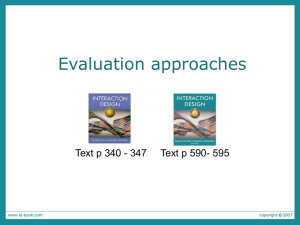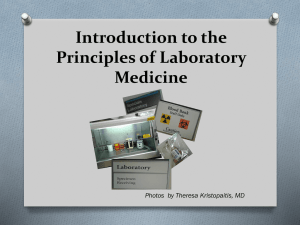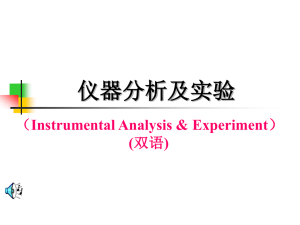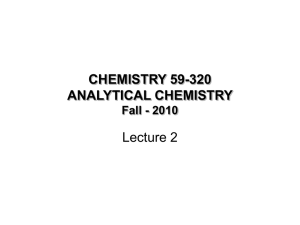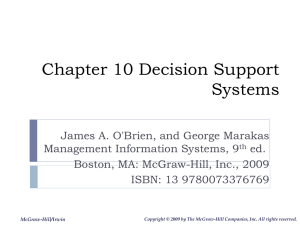Critical and Analytical Thinking
advertisement
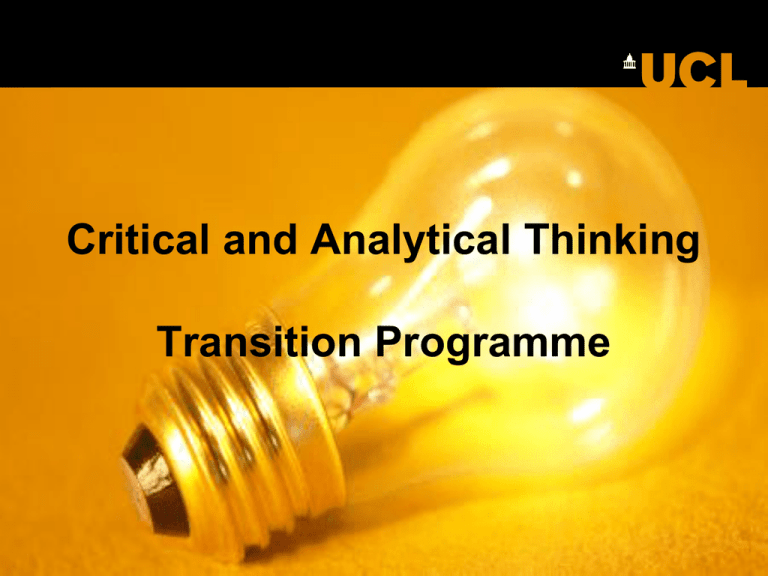
Critical and Analytical Thinking Transition Programme Critical thinking • Word ‘critical’ has positive and negative meanings • The word ‘critical’ in academia describes your attitude when reading an article/chapter • Being critical means weighing up the arguments for and against a particular point. How to think critically • Be persistent – consider an issue carefully more than once • Look at the evidence for a viewpoint – evaluate it – what are they trying to ‘sell’ me? • What are the implications of a view point – is it realistic and rational? • Knowing facts and what is right is not what academics is about • It is important to identify strengths, satisfactory points and weaknesses when being critical – then you must know why this is so • You should be critical when reading, writing and listening Analytical thinking • Being analytical mean to look deeper into what is being said • Do not take what you read as ‘given’ • Evaluate what is being argued – do you agree with it? • To be analytical is to question what you read How to think analytically • Think about the view point in relation to the bigger picture – stand back • Compare the same issue from the point of other authors – do their views differ? • Should be able to see why authors have arrived at different conclusions • You should be able to argue why you think one set of view points is preferable to another • You should be analytical when reading, writing and listening Barriers to critical and analytical thinking • Being critical does not just mean criticise • Our reasoning skills are not objective – we are biased ourselves • Reluctance to criticise experts • Wanting to know what is right and wrong • Not reading deeply enough around a subject – surface knowledge Critical and analytical reading • Prepare for critical reading – skim read the introduction and conclusion • Find the conclusions first to help clarify the rest of the reading • What is the underlying argument/ view point? • Question hidden agendas or assumptions • Theory can help fill in the gaps – what is theory? - set of ideas to explain why something happens and predict outcomes in the future • Arguments are often based on theory but an argument is not always a theory Critical and analytical reading • Where is the evidence for a view point? • Check references – are they presented accurately and are they credible? - evaluate that evidence – date, source, bias, statistics • Does the evidence support the conclusions made? • Taking notes that support critical reading • Read without a pen in your hand to avoid taking down lots of unnecessary notes • Form a set of questions to help you think more deeply about what you have read Critical and analytical reading Questioning Statement: Childhood is fluid and is represented differently within the various institutions in our society; these representations change over time. Form a Question Bank: Why? What does this really mean? Do the reasons support the argument? Is there any supporting evidence? Does this match what I know about the subject already? Does it fit in with what other people have said on the subject? Is this relevant and useful to my current purpose? How does this add to previous research on the subject? Are there any flaws in this? What is the author trying to ‘sell’ me? • You can apply these questions and similar ones to all of your arguments and essays to encourage you to question why things are the way they are – before, during and after reading Critical and analytical writing • You should question your own assumptions and biases as much as you do other authors • Ask yourself questions – why have you used a certain example, what are you trying to argue, where is the theory to support your argument? • Plan your argument before you start writing – what is the question/ problem, what are the view points surrounding the problem, which do you agree with, why? Mind Map • Do not be afraid of critically analysing works by people you know are more experienced than you Tony Buzan Critical and analytical writing • There are difference ways of presenting an idea – description, explanation, critical analysis (see next slide) • In academic writing it is not enough to simply describe an idea or theory • Description – an account of how something is done, or what something is like • Explanation – same structure as an argument but they do not attempt to persuade the reader to a particular point of view • Critical analysis – a judgement of an idea giving reasons and evidence to support your decision, you must look at ideas in detail Description, explanation or analysis? Example: • Attachment theory states that children become attached to adults who remain as consistent caregivers for some months during the period from about 6 months to two years of age. • Attachment theory states that children become attached to adults who remain as consistent caregivers for some months during the period from about 6 months to two years of age. It is suggested that this is due to the trusting bond developed from the repeated interactions with certain individuals. • Attachment theory states that children become attached to adults who remain as consistent caregivers for some months during the period from about 6 months to two years of age, and it is suggested that this is due to the trusting bond developed from the repeated interactions with certain primary carers. However, there are many cases of abused children who form strong attachments to their abusers despite being subjected to severe neglect suggesting that there are problems with this theory of attachment. Critical and analytical writing • You can see that analysis takes a greater length of discussion than an explanation. It is better to analyse and criticise a few points in an essay than try to superficially discuss lots of ideas • Your own arguments within your essay need supporting evidence • All ideas and arguments must be supported by evidence to add credibility For example: - ‘In my experience I have found that in school, girls are more obedient and attentive, whilst boys are more challenging and disobedient’ – not credible - ‘It can be suggested that in school girls are more obedient and attentive, whilst boys are more challenging and disobedient; this idea is supported by arguments put forward by Bleach (1992) and Channer (1995) who argue…..’ - credible Critical and analytical writing • Has anything been written about the subject already? – where can I find this information • Which are the most relevant and authoritative sources for this subject? • Recognise where evidence is relevant or irrelevant – does it support the conclusions of the point, what conclusions can you draw from the evidence • We should not generalise from a single case, in academics this is unacceptable – generalisations should be well-founded and based on a reasonable sample – think about this when reading the works of others • Use your question bank to encourage you to look at your own work with critical eyes • Evaluate your own writing – use a critical and analytical checklist (Stella Cottrell handout) Critical and analytical thinking • Never take anything you have read or been told as ‘given’ – question everything • Use evidence and theory to back up all of your arguments and statements – do not simply describe; analyse and criticise • Being analytical and critical is hard work but the more you practice the easier it will become • The more you read the easier it will be to think critically and analytically • Be confident in what you are arguing and why you arguing it

